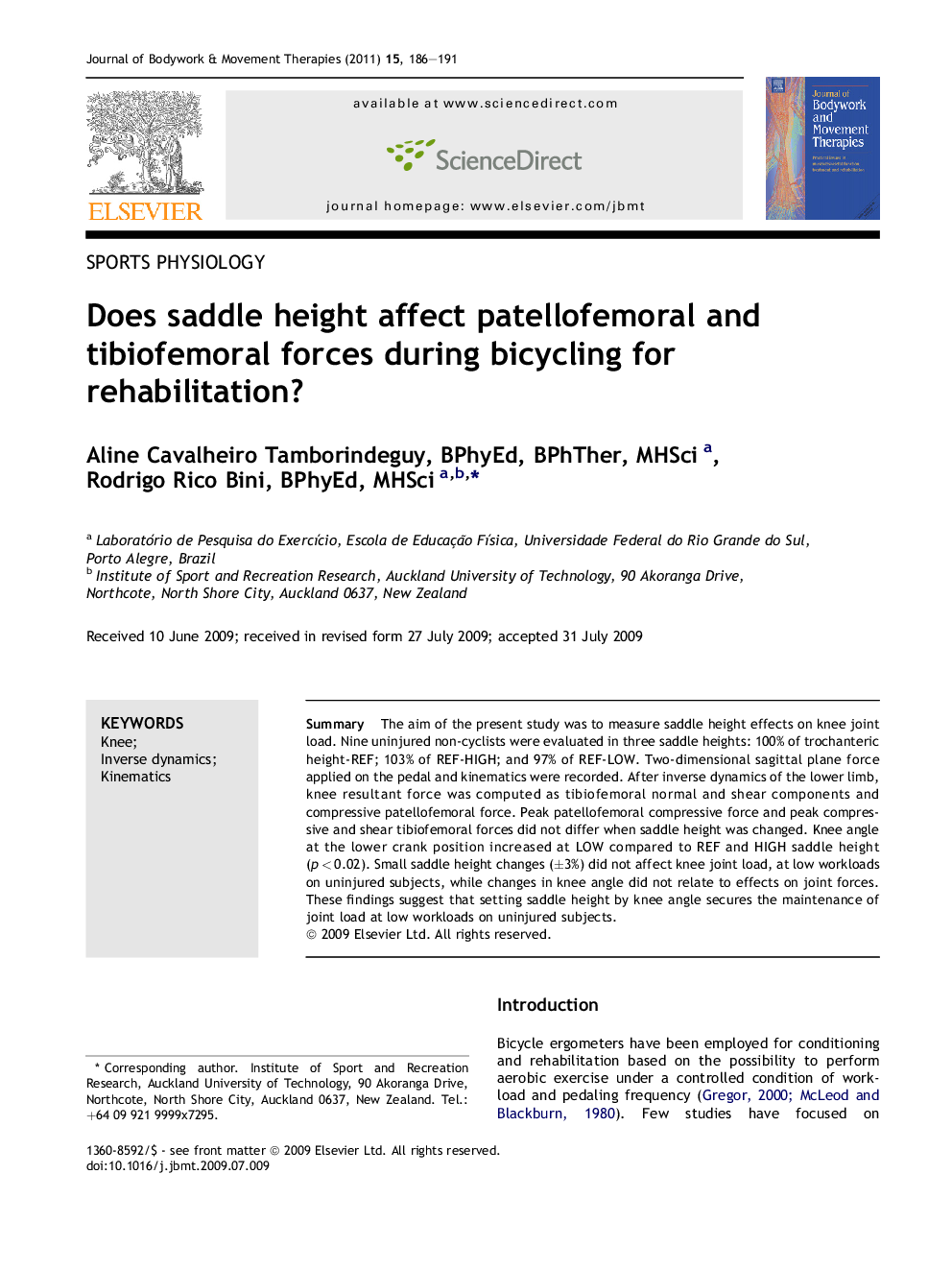| کد مقاله | کد نشریه | سال انتشار | مقاله انگلیسی | نسخه تمام متن |
|---|---|---|---|---|
| 2619790 | 1135520 | 2011 | 6 صفحه PDF | دانلود رایگان |

SummaryThe aim of the present study was to measure saddle height effects on knee joint load. Nine uninjured non-cyclists were evaluated in three saddle heights: 100% of trochanteric height-REF; 103% of REF-HIGH; and 97% of REF-LOW. Two-dimensional sagittal plane force applied on the pedal and kinematics were recorded. After inverse dynamics of the lower limb, knee resultant force was computed as tibiofemoral normal and shear components and compressive patellofemoral force. Peak patellofemoral compressive force and peak compressive and shear tibiofemoral forces did not differ when saddle height was changed. Knee angle at the lower crank position increased at LOW compared to REF and HIGH saddle height (p < 0.02). Small saddle height changes (±3%) did not affect knee joint load, at low workloads on uninjured subjects, while changes in knee angle did not relate to effects on joint forces. These findings suggest that setting saddle height by knee angle secures the maintenance of joint load at low workloads on uninjured subjects.
Journal: Journal of Bodywork and Movement Therapies - Volume 15, Issue 2, April 2011, Pages 186–191